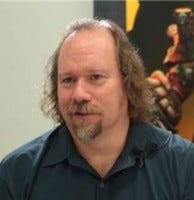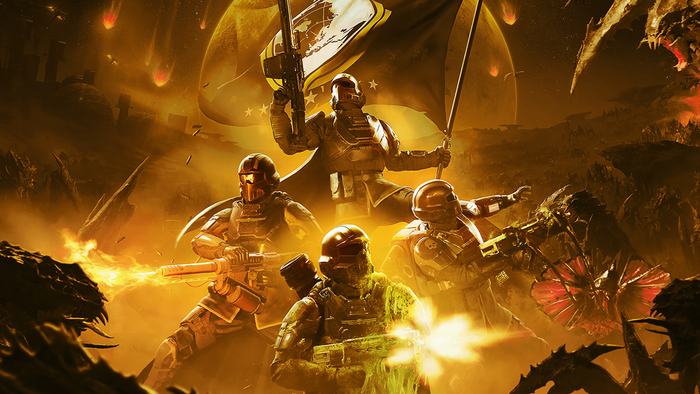
Featured Blog | This community-written post highlights the best of what the game industry has to offer. Read more like it on the Game Developer Blogs.
Pass on Picasso
Planning and iteration represent two different approaches to creation, not just in games, but in every creative field. But which is better for our medium? This post digs into these issues.

One June afternoon in 2007 found me and a few key members of the Gods & Heroes (GnH) content team at the Irish Bank (better known simply as “The Bank” in these parts). While we weren’t not sipping cool pints of Guinness and Smithwick’s in this alfresco alley, that wasn’t why we were here. After many months of attempting incremental improvements to our new player experience (NPX), we had determined to finally tear the Band-Aid off. As soon as this decisions had been made, I suggested that we repair to this offsite—my instincts told me we needed to stop looking at what we had and instead focus on our goals and create from whole cloth. My other motive, that actually did require beer, was that we needed to loosen the hell up.
In fact, far from being a unique occurrence in the development of the game, it was one of the last in a long chain of reworkings that had been set in motion more than two years before by the epochal change to the MMO space the release of World of Warcraft had caused.*
In response to this 400-pound gorilla's arrival, we had dug in hard, established a strong and coherent art style and amped up our gameplay. We redesigned the world, and brought in a head writer to drive the creation of narrative. The content team tripled in size once preproduction had been tackled. We built tools to simulate and tune combat in real time, and to more quickly create items, enemies, and test characters. I researched every aspect of ancient life, warfare, religion, and food, reading Virgil, Ovid, and Pliny, as well as many more esoteric sources. I made a study of the languages appropriate to the setting, writing and directing VO in Classical Latin, Ancient Greek, Faliscan, Samnitic, Oscan, Volscian, Gaulish, and Etruscan.
As afternoon stretched into evening at the Bank, the island of Telchinos took shape, together with the story of a hero shipwrecked there, the mythical creatures, pirates, and smugglers that inhabited the place, and the malevolent force behind it all. The picture shown below, of the final area of Telchinos, was actually created in the pub, along with several others. Within a week, we were playing through this new NPX, refining it and fleshing it out.

By E3 in the following month we were solid. We were the most awarded MMO of the show, racking up a total of seven, all pointing to the excellence of the content we had worked so hard for so long to redo: one Best Graphics, two Best Gameplays, and three Best of Shows.**
I’m not sure how common or uncommon this story is in games at large, but in my experience it’s extremely rare. And there are two elements to this rarity: one is the opportunity and the other is the will.
The rarity of the opportunity comes from how game dev studios are typically run. The sunk cost fallacy is alive and well in many companies, to such an extent that they’d rather fail than shift direction. I’ve fought against this quite a number of times, and I’m pleased to have scored a few wins, among them this reworking of GnH and the cancellation of Warcraft Adventures, of which I was an early and staunch proponent. I’d say that the latter was an early test of the ethos of quality that was to become a critical element of Blizzard’s brand, later evidenced by such high-profile cancellations as Starcraft: Ghost and Titan.
Then there is the will that’s needed to redo work. I know a lot of you are saying, “oh yeah, management needs to get this”, “producers should understand this”, or “engineers hate this”, but I’ve seen it across every discipline in game development. Iteration, theoretically accepted in most dev houses, is still seldom practiced. Many individuals in dev teams want to close the book—they want to see things as done, they don’t want to rework things, regardless of what lessons have been learned since they were made. I’d argue that it’s a part of human nature to want to turn the page and move on.
In fact, creators fall into two categories according to David Galenson in his book, Old Masters and Young Geniuses:
There have been two very different types of artist in the modern era. These two types are distinguished not by their importance, for both are prominently represented among the greatest artists of the era. They are distinguished instead by the methods by which they arrive at their major contributions. In each cases their method results from a specific conception of artistic goals, and each method is associated with specific practices in creating art. I call one of these methods aesthetically motivated experimentation, and the other conceptual execution.†
I’ll sidestep the debate on whether games are art or we are artists, as it’s a pointless one. I’ll try to minimize the use of these terms instead, and use creators so that everyone can feel comfortable with this factually correct label.
Galenson uses Cézanne and Picasso to iconify his two types, respectively, which he goes on to assert exist in every creative field. The Picasso method is to plan extensively before executing a work very quickly, while the Cézanne process involves little to no planning in advance, and the work evolves slowly based on discoveries made along the way.
The business aspect of game development would certainly prefer that we not be Cézannes. Learning things—and reacting to the things we learn—means more work. It throws schedules into disarray. It costs money. And this is definitely how things, at least in my experience, used to work. When I worked at Koei in the early ‘90s, you could only be Picasso: rather than “game designers”, we were called “planners”, and that is what we literally did. We planned everything in advance and then executed it without diverting from that plan. Much of this was necessitated by the long turnaround times in early game dev: I didn’t get a working version ofLiberty or Death with enough time to see if it was possible to win playing as the British.††
Between then and now, however, the words “iteration” and “pivot” have crept into our collective lexicon. The Agile process, which theoretically focuses development on what the player can do, has become commonplace in games as well. There is a caveat to add here that I have seen teams self-destruct because they continue to experiment indefinitely instead of deciding a direction and moving forward.
But these two approaches to game development are not absolute, just as with creators generally:
To this point, the distinction between conceptual and experimental approaches has been treated as binary. Yet as in all scientific analysis the true distinction between these concepts is not qualitative but quantitative.
Galenson goes on to point out that pure types are actually quite rare, and it is more typical for creators to fall along a spectrum in terms of their methods. Obviously, as Galenson notes, these two styles of creativity are equally valid, just like the two painters that iconify them, but they also have downsides: Being Picasso is hard—it’s hard to see everything in your head before you do anything, ignore serendipities that occur along the way, produce in somewhat robotic fashion. Being Cézanne is hard too—starting with literally no idea what you are going to do, stopping and starting, throwing things away, never being satisfied. So of course we should think instead about where we belong on the spectrum. But where is that?
I’d argue that in the art world, conceptual and experimental don’t just represent different styles of creation, they are different kinds of art, with different goals. In conceptual art, the marks on canvas are there only to express an idea—in the Picasso case it’s the taking apart and analysis of the 3D shapes of reality and rendering them onto a 2D canvas.‡ On the other hand, the Cézanne process' experimentation is essentially involved with the visual effect of the work—rather than expressing an idea, a work like this essentially is the marks on the canvas.
Since approaches, as I've noted, are rarely pure, there might well be a conceptbehind a game, but we generally acknowledge that the experience of interacting with a game is largely what it’s about. Returning to methods, the extensive rework that the GnH team took on definitely falls into the Cézanne style, as does the extreme case of cancelling games—some of his works now hanging in museums show repairs from when he attempted to destroy them by slashing the canvasses. An essential element in the personality of an aesthetically motivated experimenter is being self critical: Cézanne's dissatisfaction with his efforts drove him to continue to strive toward the excellence he is now acknowledged to have achieved—even by Picasso.
* Working at the pub was unusual. There was a lot of both work and pubbing severally.
** As some of you may already know, this was actually the high point of GnH. The tech side did not come together, the company fell apart, the game was released by another company a few years later, and had not aged well.
† Emphasis mine.
†† Much to my regret. History did stack the deck against the British, but it's important for games to be winnable. And yes, I was also responsible for game testing.
‡ In fact, Picasso’s work springboards off the visual interpretation of space into flattened planes and the breaking down of perspective that Cézanne pioneered, so in a way cubism is a Cézanne clone.
Read more about:
Featured BlogsAbout the Author(s)
You May Also Like













